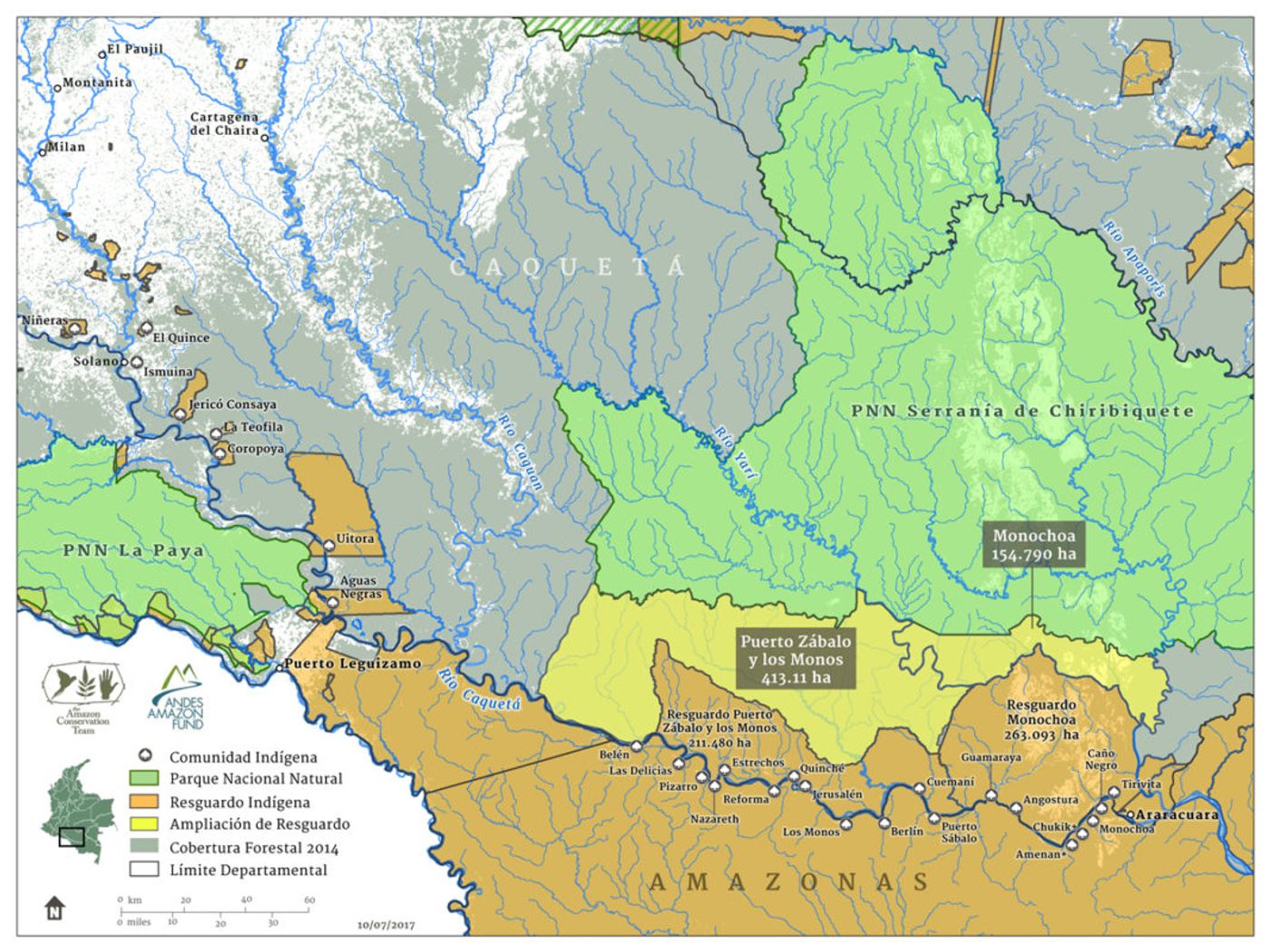Colombia expands indigenous lands to fight deforestation
In an effort to do its part on curbing deforestation and subsequent climate change, Colombia has announced the expansion of two indigenous reserves, Puerto Sabalo – Los Monos and Monochoa. The reserves back up to a large national park called Serrania de Chiribiquete which is mostly inaccessible except by foot or helicopter. Expanding the reserves will connect Chiribiquete to Predio Putumayo, which is the country’s largest indigenous reserve, thus creating a conservation corridor that will hopefully be a safe haven for flora and fauna. In all, the corridor will encompass a territory larger than Honduras.
The province of Caquetá, where both of the reserves are, has the highest rate of forest loss in Colombia. “The expansion of these two areas adds a large area of pristine rain forest — over half million hectares, for protection and management by indigenous peoples, and fulfills a peace process commitment by President Santos,” said Enrique Ortiz, program director for the Andes Amazon Fund. “The expansion area is contiguous to a rapidly changing part of Colombia and closes a gap between previously existing indigenous lands and protected areas, forming a strategic connectivity corridor, perhaps one of the largest in the Amazon. It also protects uncontacted indigenous people, a highly important human rights responsibility for Colombia.”
Puerto Sabalo – Los Monos go from an area of 211,480 to 624,580 hectares (522,578 to 1.54 million acres), and Monochoa from 263,093 to 417,883 hectares (650,116 to a little over one million acres). But more so than the numbers, the deal specifies important criteria that lands titles will belong to indigenous communities. This, the announcement states, is, “one of the most important strategies to reduce deforestation, forest degradation and ensure the protection of their fundamental rights”.
Map Source: Amazon Conservation Team
The Colombian Amazon, which with an area of roughly 119 million acres accounts for six percent of the total Amazon biome, has been protected for decades partly because of the civil conflict that has been waging in the country for the last fifty plus years. Fear of violence from guerrillas and paramilitaries kept industry out of the rainforest, but now that Colombian President Santos has signed a peace agreement, deforestation and consequential logging and cattle ranching growing.
“In the Colombian Amazon alone, an estimated 70,000 hectares were deforested in 2016, an almost 25% increase from 2015,” Amazon Conservation Team’s (ACT) Isidoro Hazbun reported to Mongabay News via email. That’s not looking good for Colombia’s commitment to the Paris Climate agreement, which aims for zero net deforestation in the Amazon by 2020 and a 20% reduction in emissions by 2030. Nevertheless, handing over the land to indigenous groups is a strong move; according to ACT, “the annual deforestation rates inside indigenous forests were 2 times lower than those on similar land without security.” Now it's up to the government to provide these groups with the support they need to keep the forests standing.










